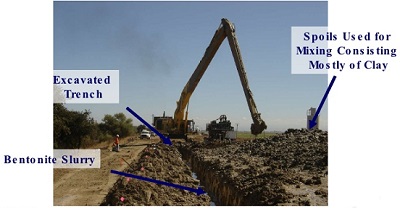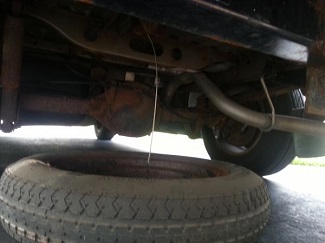 |
| Measuring Square Footage of a House |
After years of complaining about halfwits who write at pay sites, we've decided to finally strike a blow for knowledge. We've repurposed this blog to call attention to some of these stupid people and the things they've written while in too big a hurry to make money to deal with useless crap like "facts" and "knowledge." Meet the Dumbass of the Day, people!
Friday, September 30, 2016
Your Home's Square Footage by the Dummy Method
Thursday, September 29, 2016
Bible Searches for Dummies
 |
| Bible Concordance |
Wednesday, September 28, 2016
Rewiring a House for Dangerous Dummies
 |
| Household wire secured with staples |
Tuesday, September 27, 2016
pH Calculation for Dummies
 |
| If life gives you lemons, you have citric acid |
Monday, September 26, 2016
Your Car's Radiator for Dummies
 |
| Radiator and cooling system |
Sunday, September 25, 2016
Leaking Sink Flanges, the Dummy Version
 |
| Plumber's putty sealing a sink flange |
Payne displayed his plumbing ignorance right off the bat, claiming that
Saturday, September 24, 2016
Calculating Constant Speed, the Dummy Approach
 |
| Formula for calculating average speed |
Friday, September 23, 2016
Schwinn Bike Computers for Dummies
 |
| Bicycle computer (cyclocomputer) |
The Antisocial Network researcher who stuck her post in the blind pigs file did so because Liandi managed to find the website of the late Sheldon Brown, where you can find setup instructions and scanned owner's manuals for dozens or even hundreds of bike computers, old and new. Nichole did manage to get started on the right foot when she said,
Thursday, September 22, 2016
All About Clay, the Dummy Way
 |
| Clay soil sample |
Wednesday, September 21, 2016
Isosceles Triangles for Dummies
 |
| Isosceles triangle |
Tuesday, September 20, 2016
Eclipses, Umbra and Penumbra for Dummies
 |
| Umbra vs. penumbra |
Monday, September 19, 2016
Area, Perimeter and Measurement for Dummies
 |
| Regular polygons |
Although McBride claims to have both a JD and a MS (it's in Accounting: is there really such a thing?), he apparently didn't take much math; especially geometry. Had he done so, he might have used his words more carefully in the introduction to the post:
Sunday, September 18, 2016
A Big Birdhouse for Dummies
 |
| Cutesy Bird House Plan |
Richards opens by explaining that
Saturday, September 17, 2016
Acid Rain for Dummies
 |
| Carbon dioxide and rain water, acid rain, pH |
Friday, September 16, 2016
Wire Nuts, the Dummy Version
 |
| Wire nut sizing |
Oh, Thomas got going with some fairly useful information, albeit clumsily worded, in his introduction, where he said that,
Thursday, September 15, 2016
Fuel Economy Calculation for Dummies
 |
| fuel economy |
Wednesday, September 14, 2016
Backup Sump Pumps for Dummies
 |
| A water-powered backup sump pump |
Tuesday, September 13, 2016
Automatic Transmissions for Dummies
 |
| Automatic transmission selector lever |
Monday, September 12, 2016
Finding True North for Dummies
 |
| Magnetic declination map of North America (2005) |
Sunday, September 11, 2016
Bentonite Slurry for Dummies
 |
| Bentonite slurry to protect groundwater from contaminants |
Saturday, September 10, 2016
All About Gutters, the Dummy Version
 |
| How about splash blocks, Chasity? |
Friday, September 9, 2016
Volume of Voids for Dummies
 |
| Volume of Voids |
Thursday, September 8, 2016
GMC Truck Spares, the Dummies Version
 |
| Pickup truck spare tire hoist |
Wednesday, September 7, 2016
Making Magnets for Dummies
 |
| the Magnetic field |
Tuesday, September 6, 2016
Wiring a Chandelier for Dummies
 |
| What about that red wire, Nichole? |
Liandi liked to impress people with her knowledge of elementary factoids like
Monday, September 5, 2016
Electrical Boxes, the Dummy Version
 |
| Old work electrical box showing fins |
We say "not optimal" because it's quite clear that Celebi has no training or experience whatsoever in as an electrician, DIY or otherwise. That's pretty clear from the first paragraph, in which she claims that
Sunday, September 4, 2016
Adding On for Dummies
 |
| Adding on with a room addition |
Saturday, September 3, 2016
Metal Roofing, the Dummy Approach
 |
| standing seam metal roof on cabin |
Friday, September 2, 2016
A Taller Fence for Dummies
 |
| Extend the height of a privacy fence |
Let's see what Lacy has to say in the DMS¹-mandated 75 to 100-word introduction:
Thursday, September 1, 2016
Radius from Chord, the Dummy Version
 |
| Calculate a circle's radius from the length and height of a chord |
The real answer? Given the length of the chord l and the height from the chord's midpoint to the arc h, the formula for the radius r is,
Subscribe to:
Posts (Atom)